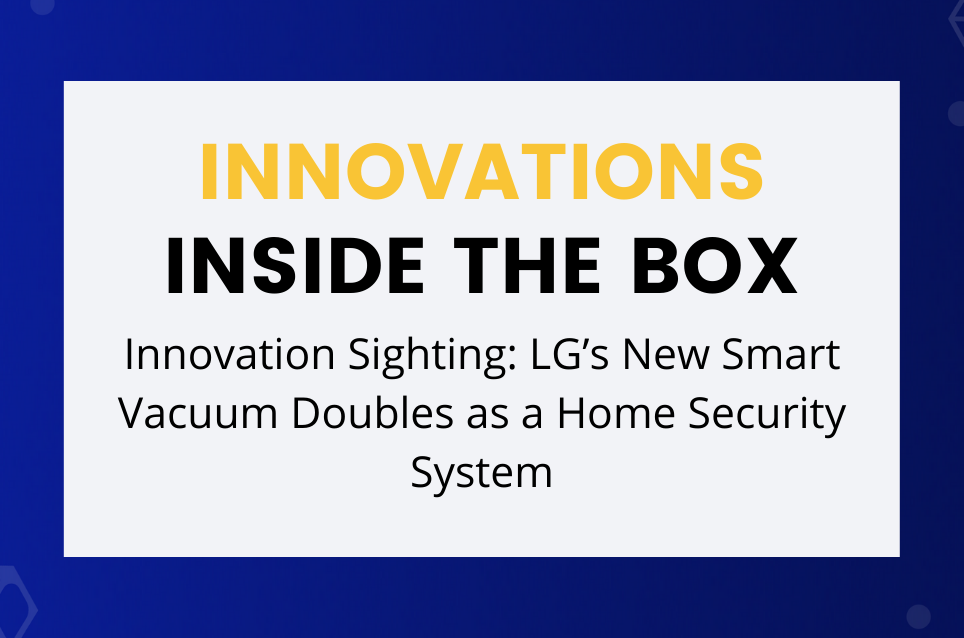The rush to put new technology in the home is heating up like never before. Challengersinclude Amazon (Echo), Google (Home), and soon we’ll have Apple’s Siri device. Microsoft can’t be far behind.
Now here’s a completely different take on home technology, and it’s a perfect example of the Task Unification Technique, one of five in the S.I.T. innovation method. Task Unification is defined as: assigning an additional task to an existing resource. That resource should be in the immediate vicinity of the problem, or what we call The Closed World. In essence, it’s taking something that is already around you and giving an additional job. The new LG Hom-Bot robotic vacuum does just that. Here’s a report from Architectural Digest:
Looking to buy a security system for your home? Consider a vacuum.
LG’s newest Hom-Bot robotic vacuum, available this month, merges cleaning and home security into one smartphone-controlled system.
In addition to sweeping up dust and crumbs, the Hom-Bot has front and top-facing cameras that can be accessed through its app at any time. In a true representation of the “smart” vacuum, once it’s become accustomed to your home, the Hom-Bot will also automatically snap photos and message them to you if it detects movement in an area of the home or at a time of the day when activity is unusual.
A square-ish rather than rounded shape allows it to edge into tighter corners, and its cameras not only act as a safety measure but also help it more accurately map the room to achieve an efficient cleaning route. Its final feature is a sure appeal to a millennial audience: The vacuum is a rose-hued shade of “metallic gold.”
LG’s Hom-Bot Turbo+ costs $999 but additional models without cameras retail for $799 and $699.
To get the most out of the Task Unification technique, you follow five basic steps:
- List all of the components, both internal and external, that are part of the Closed World of the product, service, or process.
- Select a component from the list. Assign it an additional task, using one of three methods:
- Choose an external component and use it to perform a task that the product accomplishes already
- Choose an internal component and make it do something new or extra
- Choose an internal component and make it perform the function of an external component, effectively “stealing” the external component’s function
- Visualize the new (or changed) products or services.
- What are the potential benefits, markets, and values? Who would want this, and why would they find it valuable? If you are trying to solve a specific problem, how can it help address that particular challenge?
- If you decide the new product or service is valuable, then ask: Is it feasible? Can you actually create these new products? Perform these new services? Why or why not? Is there any way to refine or adapt the idea to make it viable?





